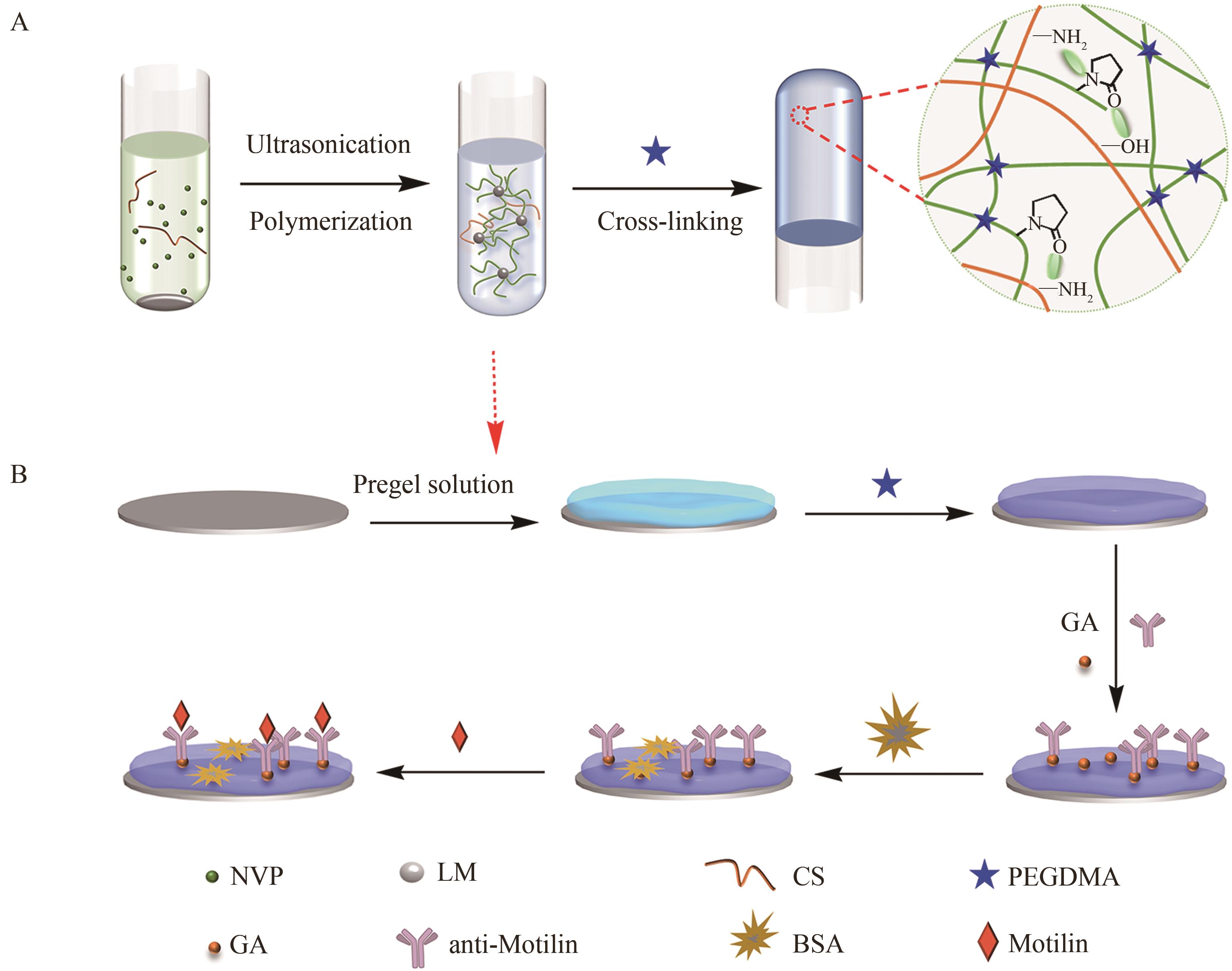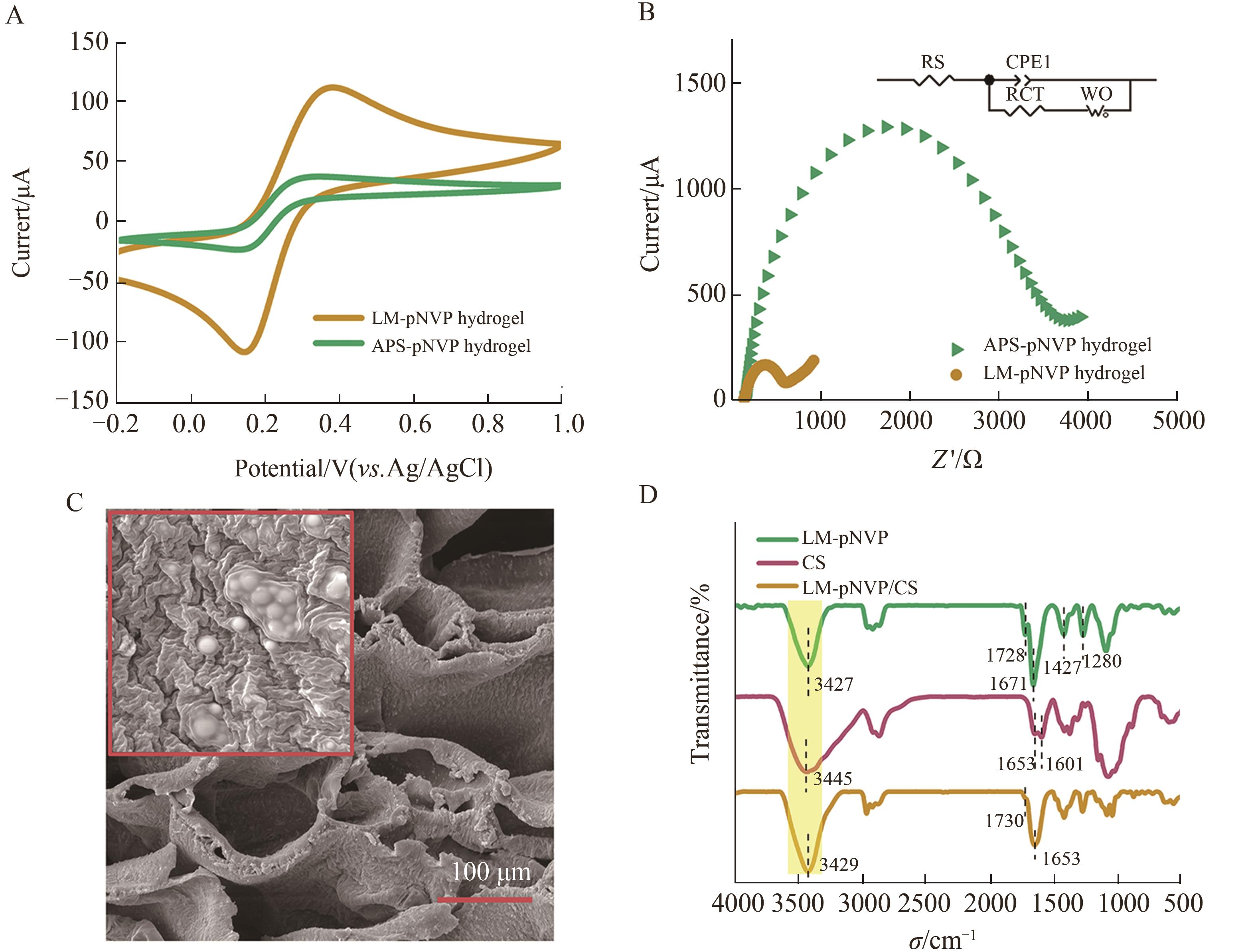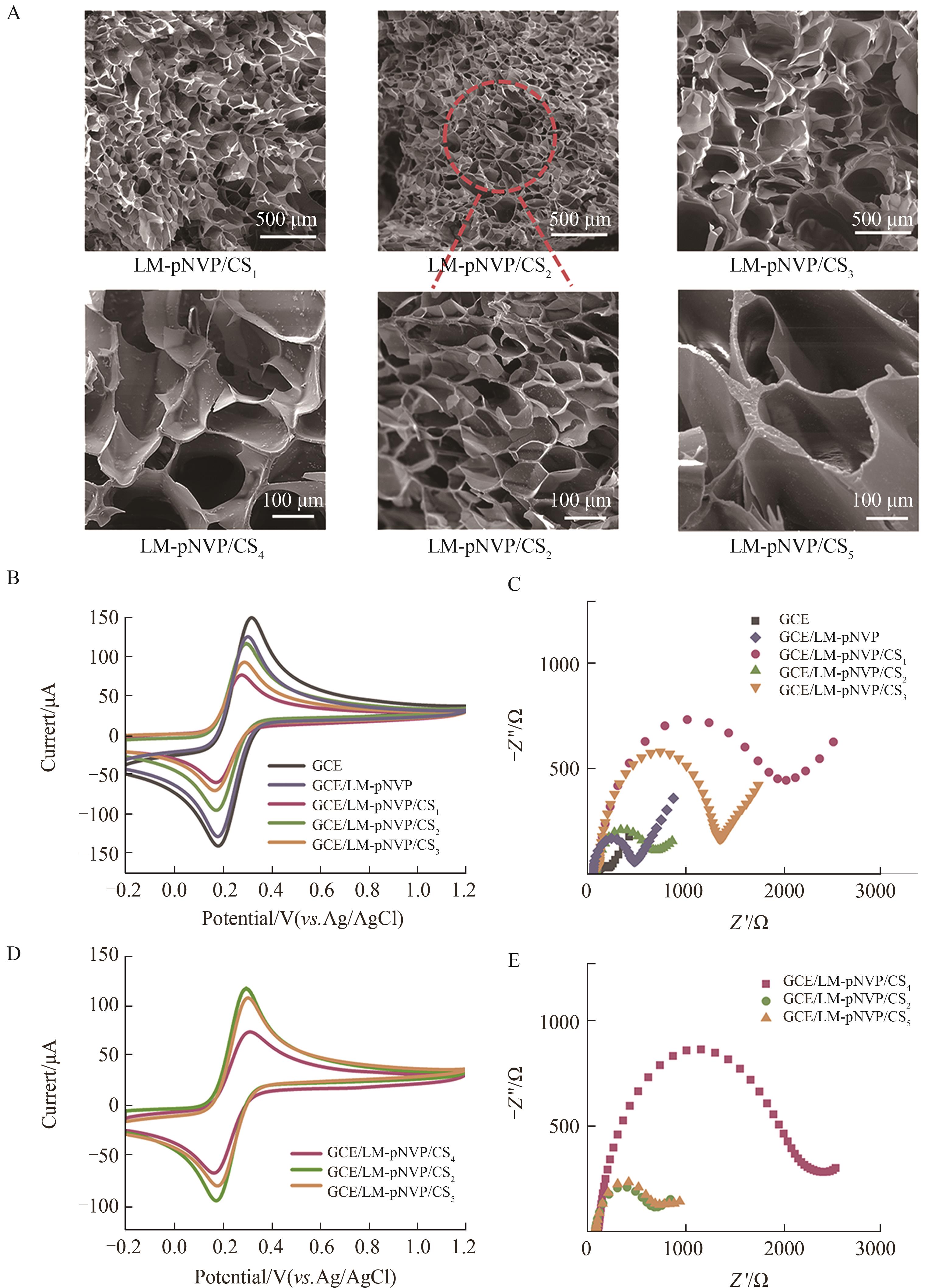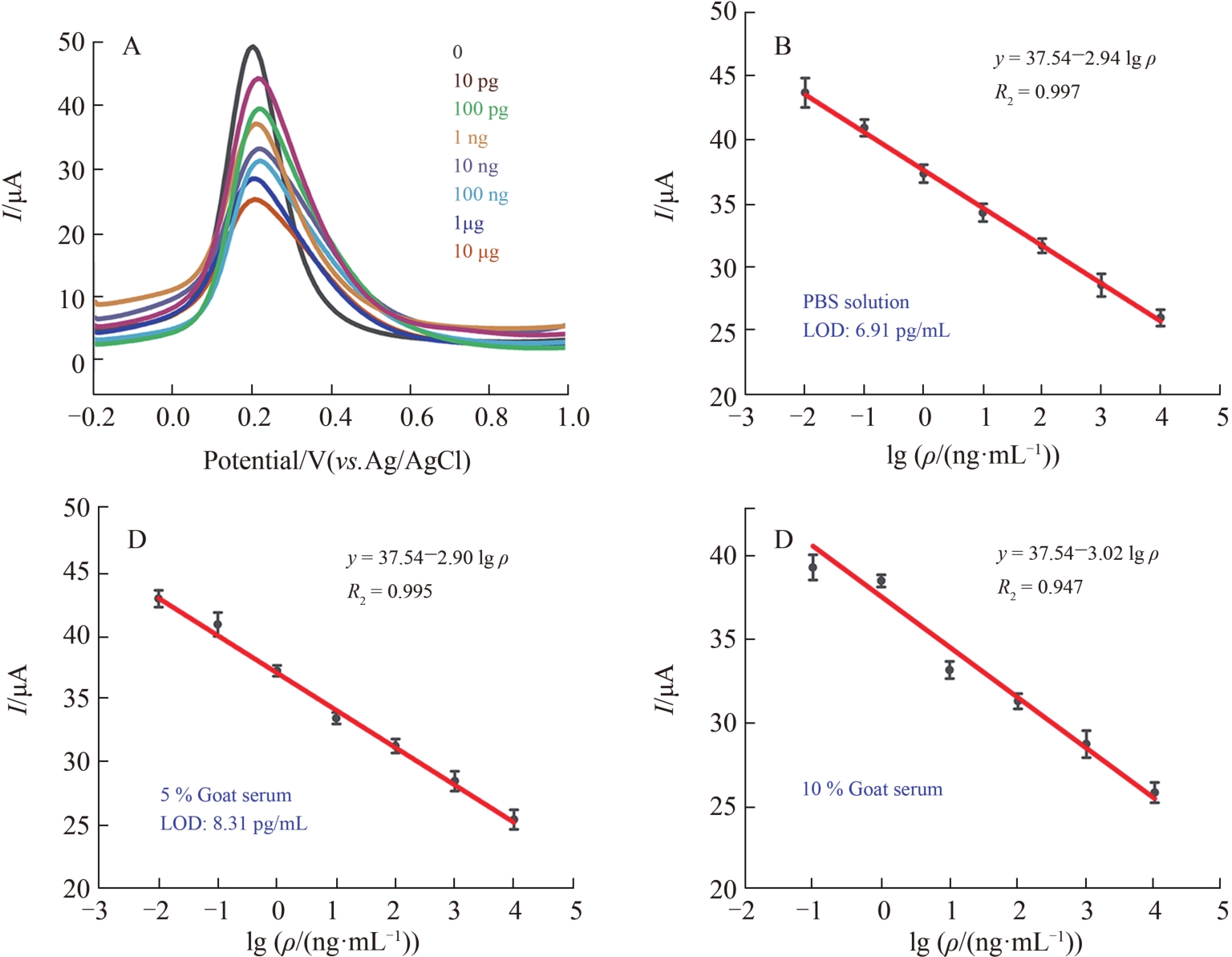| 1 |
KIM J, CAMPBELL A S, DE ÁVILA, et al. Wearable biosensors for healthcare monitoring[J]. Nat Biotechnol, 2019, 37: 389-406.
|
| 2 |
JIANG C, WANG G X, ROBERT H, et al. Antifouling strategies for selective in vitro and in vivo sensing[J]. Chem Rev, 2020, 120(8): 3852-3889.
|
| 3 |
CHEN Y, YUAN P X, WANG A J, et al. A novel electrochemical immunosensor for highly sensitive detection of prostate-specific antigen using 3D open-structured PtCu nanoframes for signal amplification[J]. Biosens Bioelectron, 2019, 126(1): 187-192.
|
| 4 |
PANIKAR S S, BANU N, HARAMATI J, et al. Anti-fouling SERS-based immunosensor for point-of-care detection of the B7-H6 tumor biomarker in cervical cancer patient serum[J]. Anal Chim Acta, 2020, 1138: 110-122.
|
| 5 |
ASSARI P, RAFATI A A, FEIZOLLAHI A, et al. Fabrication of a sensitive label free electrochemical immunosensor for detection of prostate specific antigen using functionalized multi-walled carbon nanotubes/polyaniline/AuNPs[J]. Mat Sci Eng C-Mater, 2020, 115: 111066.
|
| 6 |
WANG W, CUI M, SONG Z L, et al. An antifouling electrochemical immunosensor for carcinoembryonic antigen based on hyaluronic acid doped conducting polymer PEDOT[J]. RSC Adv, 2016, 6(91): 88411-88416.
|
| 7 |
LI Y, HAN R, CHEN M, et al. Bovine serum albumin-cross-linked polyaniline nanowires for ultralow fouling and highly sensitive electrochemical protein quantification in human serum sample[J]. Anal Chem, 2021, 93(9): 4326-4333.
|
| 8 |
WANG G, HAN R, LI Q, et al. Electrochemical biosensors capable of detecting biomarkers in human serum with unique long-term antifouling abilities based on designed multifunctional peptides[J]. Anal Chem, 2020, 92(10): 7186-7193.
|
| 9 |
RÍO J, HENRY O, JOLLY P, et al. An antifouling coating that enables affinity-based electrochemical biosensing in complex biological fluids[J]. Nat Nanotechnol, 2019, 14(12): 1143-3387.
|
| 10 |
LI X B, HE L Z, LI Y F, et al. Healable, degradable, and conductive MXene nanocomposite hydrogel for multifunctional epidermal sensors[J]. ACS Nano, 2021, 15(4): 7765-7773.
|
| 11 |
MA Z J, HUANG Q Y, XU Q, et al. Permeable superelastic liquid-metal fibre mat enables biocompatible and monolithic stretchable electronics[J]. Nat Mater, 2021, 20(6): 859-868.
|
| 12 |
VEERAPANDIAN S, JANG W, SEOL J B, et al. Hydrogen-doped viscoplastic liquid metal microparticles for stretchable printed metal lines[J]. Nat Mater, 2020, 20(4): 533-540.
|
| 13 |
XIE W, ALLIOUX F M, OU J Z, et al. Gallium-based liquid metal particles for therapeutics[J]. Trends Biotechnol, 2021, 39(6): 624-640.
|
| 14 |
XU C T, MA B, YUAN S, et al. High resolution patterning of liquid metal on hydrogel for flexible, stretchable, and self-healing electronics[J]. Adv Electron Mater, 2020, 6(1): 1900721.
|
| 15 |
MA J, LIN Y L, KIM Y W, et al. Liquid metal nanoparticles as initiators for radical polymerization of vinyl monomers[J]. ACS Macro Lett, 2019, 8(11): 1522-1527.
|
| 16 |
WANG M, LAI Z B, JIN X L, et al. Multifunctional liquid-free ionic conductive elastomer fabricated by liquid metal induced polymerization[J]. Adv Funct Mater, 2021, 31(32): 1-9.
|
| 17 |
KIM S, JEONG Y, KANG S M. Marine antifouling surface coatings using tannic acid and poly(N-vinylpyrrolidone)[J]. Bull Korean Chem Soc, 2016, 37(3): 404-407.
|
| 18 |
XU J, WANG Z B, YOU J, et al. Polymerization of moldable self-healing hydrogel with liquid metal nanodroplets for flexible strain-sensing devices[J]. Chem Eng J, 2020, 392: 123788.
|
| 19 |
DONG P, SHU X L, PENG R Q, et al. Macroporous zwitterionic composite cryogel based on chitosan oligosaccharide for antifungal application[J]. Mat Sci Eng C-Mater, 2021, 128: 112327.
|
| 20 |
AMIRIAN J, ZENG Y, SHEKH M, et al. In-situ crosslinked hydrogel based on amidated pectin/oxidized chitosan as potential wound dressing for skin repairing[J]. Carbohyd Polym, 2020, 251: 117005.
|
| 21 |
LI P L, LIU S, YANG X, et al. Low-drug resistance carbon quantum dots decorated injectable self-healing hydrogel with potent antibiofilm property and cutaneous wound healing[J]. Chem Eng J, 2020, 403: 126387.
|
| 22 |
SMITHA B, SRIDHAR S, KHAN A A. Chitosan-poly(vinyl pyrrolidone) blends as membranes for direct methanol fuel cell applications[J]. J Power Sources, 2006, 159(2): 846-854.
|
| 23 |
WANG B L, WANG J L, LI D D, et al. Chitosan/poly(vinyl pyrollidone) coatings improve the antibacterial properties of poly(ethylene terephthalate)[J]. Appl Sur Sci, 2012, 258(20): 7801-7808.
|
| 24 |
ALVER E, METIN A U, CIFTCI H. Synthesis and characterization of chitosan/polyvinylpyrrolidone/zeolite composite by solution blending method[J]. J Inorg Organomet P, 2014, 24(6): 1048-1054.
|

 )
)





